#madagascar pochard
Text
Animal of the Day!
Madagascar Pochard (Aythya innotata)
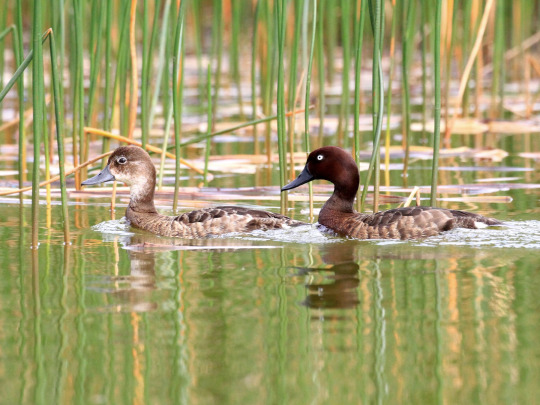
(Photo from Charles Davies)
Conservation Status- Critically Endangered
Habitat- Madagascar
Size (Weight/Length)- 56 cm
Diet- Insects
Cool Facts- The Madagascar pochard is considered the world’s rarest species of duck. These unassuming diving ducks were originally thought to be the more common ferruginous duck until a clear distinction was made. Due to a mixture of habitat destruction and introduced sport fish destroying nests, the Madagascar pochard was thought to have gone extinct in 1991. Surprisingly, an expedition in 2006 managed to locate nine mature adults, thought to be the last in existence. In one of the most ambitious breeding projects, clutches of eggs were removed from the wild and brought into off-site breeding facilities. In 2012, the captive breeding population was 60 individuals and increased to 80 by 2013. A location was scouted for reintroduction and local communities worked with conservationists to provide restored habitat. In 2018, 21 Madagascar pochards were released into the wild where they still live today.
Rating- 12/10 (The fight for survival continues.)
#animal of the day#animals#ducks#birds#wednesday#june 14#madagascar pochard#biology#science#conservation#the more you know
141 notes
·
View notes
Text


---

The Search for Lost Birds is a collaboration between Re:wild, American Bird Conservancy (ABC) and BirdLife International, with data support from the Cornell Lab of Ornithology and its eBird platform used by birders around the world. It’s an extension of Re:wild’s Search for Lost Species program, which launched in 2017 and has since rediscovered eight of its top 25 most wanted lost species. As its name suggests, however, the Search for Lost Birds focuses exclusively on rediscovering birds that have become enigmas in ornithology. [...] The Search for Lost Birds is hoping to harness the collective power of the global birdwatching community [...].
None of the top 10 most wanted birds have had a documented sighting in the wild in at least 10 years, but they are not classified as “extinct” on the IUCN Red List of Threatened Species. The reasons behind their disappearances range from habitat destruction to invasive species. [...] The 10 birds span five continents and a variety of groups of species, from hummingbirds to raptors. Some have recently been lost to science, while others have been lost for more than a century. Two species, the Siau scops-owl and Negros fruit-dove, have only ever been documented once, when they were originally described in the mid 1800s and in 1953, respectively. [...]
---
The Siau scops-owl was last seen 155 years ago, when it was first described by science, but there have been unconfirmed reported sightings and calls of a bird that potentially matches the description of the owl during the past 20 years. Much of the forest where it was originally discovered has been destroyed, but given how challenging it can be to detect small forest owls [...].
One species on the list, the South Island kōkao, has already been the focus of an on-going search. The South Island Kōkako Charitable Trust has been leading a community-driven search for the bird for the past 11 years, following up on possible sightings and reports of people hearing what sounds like the bird’s haunting call. They launched a public search campaign in 2017 that has drawn nearly 300 reports of possible encounters with a South Island kōkako, which, addition to historic reports, they have rated and mapped. [...]
Recent rediscoveries and documented sightings of other rare birds have fueled hope [...]. An expedition for the Sinù parakeet in Colombia in March 2021, one of Re:wild’s top 25 most wanted lost species, didn’t find the parakeet, but did document dozens of species that had never before been recorded in Cordóba Department. In Indonesia, the black-browed babbler, a bird that had only had one documented sighting, was rediscovered after 170 years in February 2021. [...] The blue-eyed ground-dove in Brazil and the Madagascar pochard in Madagascar, were both once lost species, but are now increasing in population thanks to conservation efforts following their rediscoveries.

---
Headline, images, captions, and text published by: Devin Murphy. “The new Search for Lost Birds aims to find some of the rarest birds on Earth.” Re:wild. Press Release. 17 December 2021.
#dont always like wellfinanced euroamerican socalled expeditions that can undermine local ways of knowing and indigenous knowledge#and dont like encouraging potential habitat destruction from gallavanting around sensitive habitat#but at least in these cases the project relies on local observers and birders#anyway was reading this because as we all know i love endemic hummingbird species of tropical Andes and central america#and in 2022 someone already rediscovered the santa marta sabrewing hummingbird on this list
40 notes
·
View notes
Text
Birds
The most common bird in the world is the Chicken. The rarest is a type of duck, the Madagascar Pochard. There are only about 25 of them in the world.
10 facts about birds:
0 notes
Text

April 4, 2021 - Madagascar Pochard (Aythya innotata)
Found only in a small area of northern Madagascar, these ducks were believed to be extinct after 1991, until their rediscovery in 2006. They eat mostly invertebrates, along with a small amount of plant matter, usually foraging alone or in pairs. Breeding between July and February, they build their nests in vegetation at the edges of lakes where females lay clutches of six to ten eggs. They are classified as Critically Endangered by the IUCN as their extremely small population is at risk from a variety of factors, including habitat loss and degradation, hunting, invasive species, pollution, climate change, and severe weather events. A captive breeding program started in 2009 has successfully released ducklings.
52 notes
·
View notes
Photo

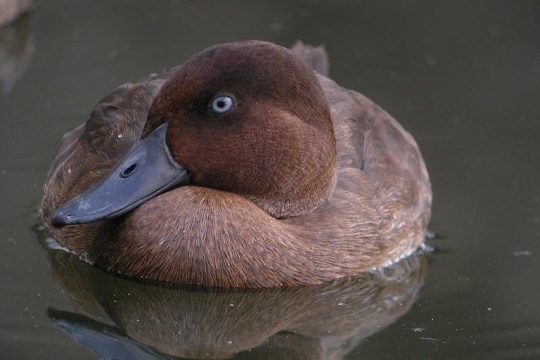
Lucky ducks: Once thought extinct, rare pochards take steps toward recovery
One of the world’s rarest birds, once thought to be extinct, successfully bred in the wild late last year. The crop of ducklings marks a victory for conservation groups that have been working for more than a decade to save the species.
In November, conservationists celebrated the appearance of 12 Madagascar pochard (Aythya innotata) ducklings on Lake Sofia in northern Madagascar. They had introduced a set of young adult pochards there in December 2018 but did not expect them to reproduce so quickly. Diving ducks normally don’t breed until they are 2 years old.
“We were very surprised and excited to have chicks just one year after introducing the ducks,” Felix Razafindrajao, a wetlands manager for Durrell Wildlife Conservation Trust, a group based on Jersey in the British Isles, told Mongabay. In addition to the 12 ducklings, which came in two broods, there are also eight pochard eggs in the marshes that should hatch in the next few weeks, he said.
The pochard was once common in Madagascar’s highlands, but the population declined rapidly in the mid-20th century. Besides one male found in 1991, there were no confirmed sightings between 1970 and 2006, when a scientist from U.S conservation group the Peregrine Fund happened to spot a few of the ducks in a volcanic lake in northern Madagascar.
Decades-long efforts to find the duck through surveys and public campaigns had, it turned out, been too geographically restricted. The search had focused on the center of the high plateau, and especially the Lake Alaotra region, where the pochard, known locally as fotsimaso (“white eyes”), was once common. But the duck was in the far fringes of the high plateau.
“Everybody was looking for the duck in the high plateau but they forgot about the high plateau in the northwest,” Richard Lewis, Durrell’s country director, told Mongabay.
The rediscovered pochards were in fact living in a mile-high lake, surrounded by what Lewis called a “fabulous bit of forest up in the middle of nowhere,” where there was little deforestation or rice cultivation. The Bemanevika site, some 32 to 40 kilometers (20 to 25 miles) northwest of the town of Bealanana, is now a protected area, having received that status partly because of the pochard’s presence. The site includes four shallow lakes, but the pochards usually stay on the one where they were found and breed in its papyrus marshes.
After 2006, scientists determined that Bemanevika was not an ideal place for the pochard population to grow because of the topography of the lake the pochards kept to and the extremely high death rate of ducklings. “This appears to be an example of a Critically Endangered species whose last refuge is in habitat that is not ideal, but is undisturbed,” wrote the authors of a 2015 study in Bird Conservation International.
#Madagascar Pochard#Aythya innotata#Aythya#Aythyinae#Anatidae#Anseriformes#Galloanserae#Aves#birds#duck#waterfowl#endangered#conservation#Madagascar
19 notes
·
View notes
Photo

🦆 🇲🇬 #Fact #Pochard #Madagascar #Madagascar🇲🇬 #MadagascarPochard (at Bexhill, East Sussex) https://www.instagram.com/p/CA8kKTNBr2J/?igshid=1fq8s4axlfm20
0 notes
Note
What do you think the batfamily’s favorite animals are?
Alfred- Red Deer
Bruce- Madagascar Pochard
Dick- Asian Elephant
Jason- Raven
Tim- Border Collie
Duke- Swan
Steph- The One Eyed One Horn Flying Purple People Eater
Cass- Braided Krait
Damian- Vampire Bat
#batfamily headcanon#batfamily headcanons#dc headcanons#dc headcanon#headcanons#headcanon#batfamily imagines#batfamily imagine#batfamily#dc imagines#dc imagine#dc comics#dc#alfred pennyworth#bruce wayne#dick grayson#jason todd#tim drake#duke thomas#stephanie brown#cassandra wayne#cass wayne#damian wayne
92 notes
·
View notes
Photo


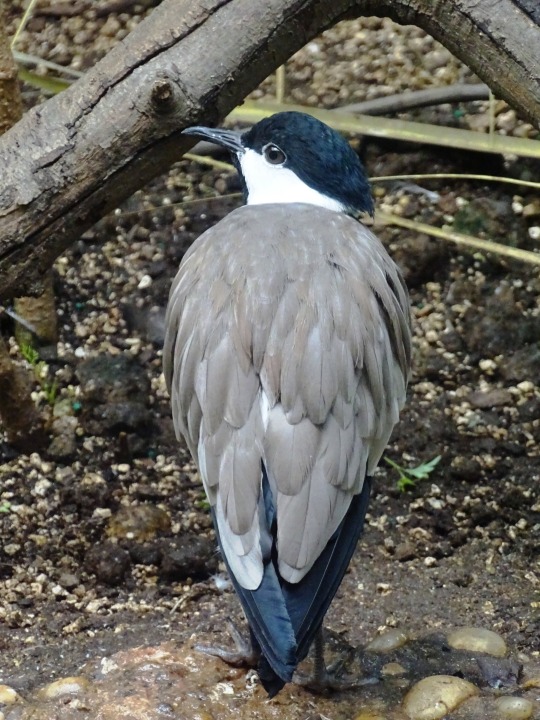



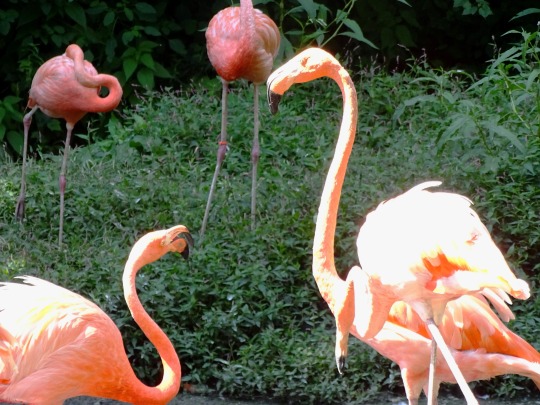

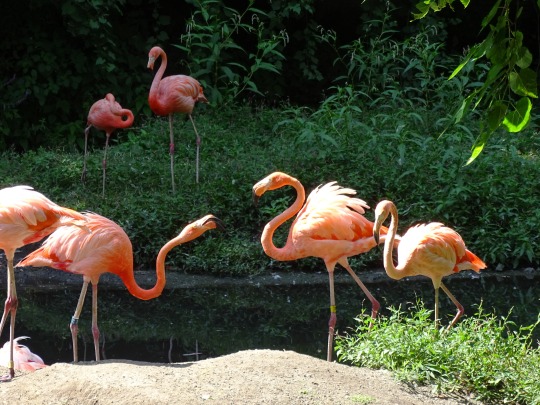

Aquatic Bird House, Bronx Zoo (No. 3)
The current Aquatic Bird House opened on September 24, 1964, on the foundation of the original house, which was opened on November 8, 1899, with the rest of the zoo. The building features a multitude of mostly open-fronted enclosures mainly focusing on coastal and wetland habitats and the species that rely on them. Scarlet ibises, roseate spoonbills, a Madagascar crested ibis, giant wood rail, pied avocets, Baer's pochards, common terns, African spoonbills, silver teals and Forster's terns are among the residents here. The exhibit also features an outdoor pond home to a flock of American flamingos and Orinoco geese, and a large aviary home to greater and lesser adjutant storks. The zoo is one of only three zoos in North America working with the endangered storks and has bred them several times, including the hatching of two chicks on June 27 and August 15, 2015. The Aquatic Bird House is also home to another endangered stork species: the Storm's stork. The zoo is one of only two in the United States working with this species; the other being the San Diego Zoo. In May 2014, the zoo opened a new nocturnal enclosure for a North Island brown kiwi in the building, and in May 2015, a colony of Australian little blue penguins from the Taronga Zoo were added.
Source: Wikipedia
#American flamingos#outdoor pond#Bronx Zoo#my favorite zoo#the Bronx#summer 2019#birds#animal#nature#flora#fauna#original photography#New York City#tourist attraction#indoors#outdoors#Anhinga#Phoenicopterus ruber#Snowy Egret#Spur-Winged Lapwing#close up#detail#USA#Eastern USA
23 notes
·
View notes
Text
Madagascan Pochard
So there is this species of duck endemic to Madagascar, but there is only one population left with about 20-40 individuals. Needless to say my new life mission is to save these ducks.
#ducks#sorry I have been absent depression kicks my butt#madagascar#biodiversity#if you want aye aye factts hit me up
1 note
·
View note
Text
Aythya

Lesser Scaup by Shersey DC, CC BY 2.0
PLEASE SUPPORT US ON PATREON. EACH and EVERY DONATION helps to keep this blog running! Any amount, even ONE DOLLAR is APPRECIATED! IF YOU ENJOY THIS CONTENT, please CONSIDER DONATING!
Name: Aythya
Status: Extant
First Described: 1822
Described By: Bole
Classification: Dinosauria, Saurischia, Eusaurischia, Theropoda, Neotheropoda, Averostra, Tetanurae, Orionides, Avetheropoda, Coelurosauria, Tyrannoraptora, Maniraptoriformes, Maniraptora, Pennaraptora, Paraves, Eumaniraptora, Averaptora, Avialae, Euavialae, Avebrevicauda, Pygostylia, Ornithothoraces, Euornithes, Ornithuromorpha, Ornithurae, Neornithes, Neognathae, Galloanserae, Anseriformes, Anseres, Anatoidea, Anatidae, Anatinae, Aythyini
Referred Species: A. valisineria (Canvasback, Extant), A. ferina (Common Pochard, Extant), A. americana (Redhead, Extant), A. collaris (Ring-Necked Ducks, Extant), A. australis (Hardhead, Extant), A. baeri (Baer’s Pochard, Extant), A. nyroca (Ferruginous Duck, Extant), A. innotata (Madagascar Pochard, Extant), A. novaeseelandiae (New Zealand Scaup, Extant), A. fuligula (Tufted Duck, Extant), A. marila (Greater Scaup, Extant), A. affinis (Lesser Scaup, Extant), A. shihuibas (Extinct), A. denesi (Extinct)

Ferruginous Duck by Francis C. Franklin, CC BY-SA 3.0
Aythya is a large genus of diving ducks from all over the world, including many different species including Scaups and Pochard. While most species in this genus are not threatened with extinction, a few of them are critically endangered, especially those in insular environments. The oldest occurrence of this genus is from the late Miocene, and as such it appears to be about 12 million years old, from the Tortonian age of the Miocene of the Neogene, until today. Almost all of these ducks are associated with marine environments, given their diving ecology.

A. denesi by Scott Reid on @drawingwithdinosaurs
A. shihuibas is one of two known extinct species in this genus, from the Late Miocene of China. A. denesi is another species, hailing from the late Miocene of Hungary, specifically the Polgárdi 4 formation in Feér County. There is also an Early Pleistocene member of this genus from Turkey that remains undescribed. These extinct members of the genus are, in general, known from fairly limited material. A. denesi is known from fairly limited material of the humerus, showing it was very similar to living members of this genus of diving ducks, showing advanced structures typical of this genus, but still retaining some of the more plesiomorphic (re: ancestral) features of ducks in general, including some fairly “primitive” characteristics. This shows that these diving ducks were still transitional in their evolution in the late Miocene, and it was only recently that modern forms for this genus were really starting to appear.

Canvasback by Dick Daniels, CC BY-SA 3.0
The Canvasback, A. valisineria, is an unthreatened species of this genus primarily from North America. It breeds in Canada and the Western United States, and spends the winters in most of the rest of the United States and Mexico. The largest species of this genus, it is about the size of a mallard, weighing up to 1.6 kilograms, though it is more compact than the mallard. The males have ruddy brown heads with black necks and white bodies, while the females are more brown all over. They nest primarily on water near prairie marshes, though some breed in subarctic river deltas. They lay about 5 to 11 eggs at a time. They feed primarily on seeds, buds, leaves, tubers, roots, snails, and insects, mainly by diving but also by dabbling, given their wide variety of habitats - they are highly migratory ducks!

Common Pochard by Tony Hisgett, CC BY 2.0
The Common Pochard, A. ferina, is a species vulnerable to extinction from Europe and Asia. They are migratory birds as well, spending winter in Southwestern Europe, and are commonly found breeding in the northern British Isles. The males have distinctive red heads, black necks, and white bodies, while the females are primarily brown and actually make growling sounds. They form very large flocks, often mixed ones, and feed by both diving and dabbling on aquatic plants, molluscs, insects, and even fish. They usually feed during the night. Due to urbanization and overhunting, their populations are currently on decline.

Redhead Duck by Kevin Bercaw, CC BY 3.0
The Redhead Duck, A. americana, is a nonthreatened species from North America, with males once again very distinct due to the bright red heads and greyish-black bodies. They spend the winter in Southern North America, and then breed in the Western United States and Canada, migrating between these two locations. They are very well adapted for underwater foraging, with legs far back on their bodies to aid in diving, but making land walking extremely difficult. They feed primarily on gastropods, molluscs, and insects, and will eat plants during the winter as well. They prefer living in wetland environments, especially ones with deep enough water for vegetation for their breeding habitat. They do flock together on lakes and migrate in pairs, with elaborate courtship rituals involving the males kinking their necks and stretching them for display, making calls until the female shows reciprocation. They build nests in thick plant material, and actually breed in very social environments, laying eggs of up to 7 young.

Ring-Necked Duck by Dan Pancamo, CC BY-SA 2.0
The Ring-Necked Duck, A. collaris, is another diving duck of least concern from North America, breeding in Canada and then migrating down to the Southwestern United States and Mexico for the winter season. Dark in color, the males have noticeable white beaks and bright white wings, with red rings around their necks, while the females are more dark in color all around (as shown above). They breed in wooded lakes and ponds, mainly in boreal regions, and then migrate to lakes, ponds, rivers, and bays in warmer climates. Though they form pairs for breeding, they usually separate after reproduction. About 10 eggs are laid per clutch, which are guarded by the mothers until the young can fly. They are omnivores, feeding on animals and plants throughout the year, though they prefer plants to animals as adults.
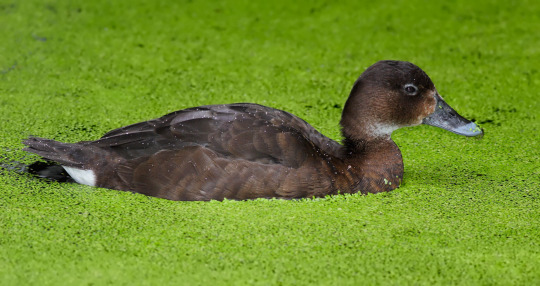
Hardhead, by Fir0002, GFDL 1.2
The Hardhead, A. australis, is the only diving duck known from Australia, not considered threatened with extinction due to its widespread presence in its range. They are common in the south-eastern portion of Australia, but also is found frequently near coasts. They are fairly nomadic ducks, except during drought years, when they disperse in search of water. They dive deeply for food, and are often found submerged fro even a minute at a time, eating a lot of small water animals. They enjoy living in lakes, swamps, and rivers, but are usually avoiding the coast, and are rarely found on land. They are actually fairly small ducks, and both males and females are brown, though the males have darker brown heads.

Baer’s Pochard by Dick Daniels, CC BY-SA 3.0
Baer’s Pochard, A. baeri, is a critically endangered diving duck from eastern Asia, breeding in Russia and China and migrating to Vietnam, Japan, and India for the winter months. It is a fairly small duck with long, distinctive beaks, and dark heads with brown bodies in the males. They are fairly similar in general to other members of this genus, breeding around lakes with rich vegetation and nesting in dense grass, typically favoring coastal wetlands and ponds. Unfortunately, its numbers are decreasing very rapidly, primarily due to wetland destruction and hunting, with up to 3,000 individuals killed every year.

Ferruginous Ducks by Erbanor, in the Public Domain
The Ferruginous Duck, A. nyroca, is a near-threatened species from Eurasia, with males and females being a chestnut brown, though the females slightly darker and duller than the males. They live in shallow bodies of fresh water, sometimes slightly salty ones. They breed from the Iberian Peninsula and the Maghreb south to Arabia, and then winters in the Mediterranean Basin and Black Sea. They are fairly social, and lay eggs in sites next to water. They both dive and dabble for food, feeding primarily on aquatic plants and insects. They are threatened due to habitat degradation by humans, mainly due to impoundment, drainage, and pollution. Non-native species also cause invasive competition for these birds.
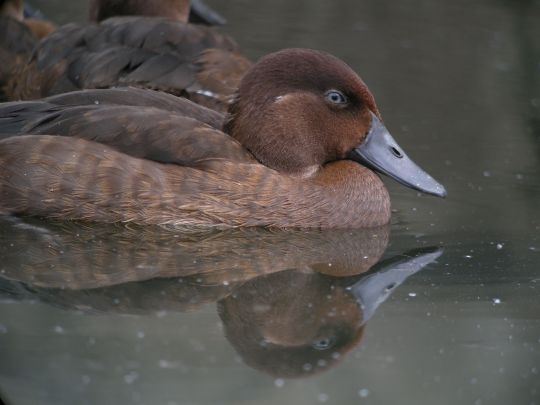
Madagascan Pochard by Frank Vassen, CC BY 2.0
The Madagascan Pochard, A. innotata, is a very critically endangered and rare species of diving duck, primarily known from Lake Matsaborimena in Madagascar. The population today is only around 80 individuals. They probably started an extreme decline in the mid-1900s, due to introduction of fish species that would kill pochard chicks. Rice cultivation has also lead to sharp population declines. The last sighting prior to recent times was a small flock in 1960; after that point, only a few more have been seen, though rescue plans are ongoing and captive breeding is working, with reintroduction on Lake Sofia planned for the near future.
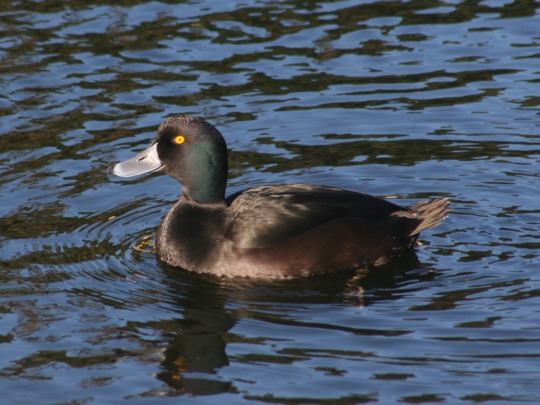
New Zealand Scaup by Tony Wills, CC BY-SA 3.0
The New Zealand Scaup, A. novaeseelandiae, is a nonthreatened species found throughout New Zealand and no one else. It is commonly called the Papango by the Māori. The Papango is a diving duck that can submerge for up to half a minute, looking for aquatic plants and small animals. They are found in deep freshwater lakes and ponds, and it doesn’t migrate. They lay eggs from October to March, up to eight in a clutch, which are incubated by the females and brought to suitable diving locations soon after hatching. Males have striking yellow eyes and greenish heads, while the females have a white patch on their faces and non-yellow eyes.

Tufted Duck by Andreas Trepte, CC BY-SA 2.5
The Tufted Duck, A. fuligula, is a small, nonthreatened diving duck, with up to one million birds out in the wild. It is found across all of the Northern Hemisphere, found as a winter visitor in the United States and Canada, though primarily known from Europe and certain localities in Asia such as the Indian subcontinent and Japan. They breed close to marshes and lakes with vegetation to conceal their nests, and they are also often found on coastal lagoons and ponds. They dive for food, feeding primarily on molluscs and insects. The males are all black except for white sides of their bodies, with clear little crests coming off of their heads; while the females are more brownish.

Greater Scaup by Calibas, CC BY-SA 4.0
The Greater Scaup, A. marila, is a commonly known diving duck from the Northern Hemisphere. This duck is so commonly known that decoys for hunting are often designed off of it, and their distinctive patterns are see frequently in duck-related things (my mom had bookends that looked like Greater Scaups). The males have dark green and black heads and striped backs, with distinct white and black patterns on their bodies. The females are mostly brown, but also have white patches on their sides. These ducks live in both North America and Eurasia, typically near coastal areas and around lakes. They eat aquatic molluscs, plants, and insects, which they get through diving. They weigh up to 1.4 kilograms, and are primarily associated with polar regions as well. They breed in the tundra and boreal forests, nesting on islands in northern lakes. The males make quick soft whistles to attract the females, which make raspy vocalizations in response. They form monogamous pairs, which nest close together, and after the eggs are laid the males leave the females. The females lay up to nine eggs, and the chicks are able to walk nearly immediately, though the female guards them until they’re able to fend for themselves. They are threatened by a variety of predators, including humans; they are also threatened by pollution; but there are conservation efforts ongoing, including banding programs.

Lesser Scaup by Connor Mah, CC BY-SA 3.0
And finally, the Lesser Scaup, A. affinis, is a smaller American species that is also not threatened with extinction. It breeds primarily in Canada, migrates across the Northern United States, and winters in the Southern United States, Mexico, and Central America. These ducks weigh up to 1 kilogram, and the males have black heads and striped bodies, while the females are primarily brown. Quieter ducks, they are frequently hard to distinguish from the Greater Scaup, especially since they often flock together. However, Lesser Scaups have darker irises than Greater Scaups. These ducks breed primarily in inland lakes and marsh ponds, and then migrate south. They forage through mud at the bottom of these waterways, and even will dabble rather than dive, though they primarily dive for molluscs and some aquatic plants. They nest in sheltered locations near the water, in shallow depressions lined with plants and down feathers, and lay up to 11 eggs in a nest, which are watched primarily by the mothers. Though not threatened yet, they are experiencing sharp declines in population, primarily due to decreasing breeding success, pollution, and habitat destruction, as well as climate change.
Buy the author a coffee: http://ko-fi.com/kulindadromeus
Sources:
https://en.wikipedia.org/wiki/Aythya
https://en.wikipedia.org/wiki/Canvasback
https://en.wikipedia.org/wiki/Common_pochard
https://en.wikipedia.org/wiki/Redhead_(bird)
https://en.wikipedia.org/wiki/Ring-necked_duck
https://en.wikipedia.org/wiki/Hardhead
https://en.wikipedia.org/wiki/Baer%27s_pochard
https://en.wikipedia.org/wiki/Ferruginous_duck
https://en.wikipedia.org/wiki/Madagascan_pochard
https://en.wikipedia.org/wiki/New_Zealand_scaup
https://en.wikipedia.org/wiki/Tufted_duck
https://en.wikipedia.org/wiki/Greater_scaup
https://en.wikipedia.org/wiki/Lesser_scaup
Zelenkov, N. V. 2016. Revision of Non-Passeriform Birds from Polgárdi (Hungary, Late Miocene): 1. Anseriformes. Paleontological Journal 50 (5): 83-86.
#aythya#duck#dinosaur#bird#pochard#birblr#palaeoblr#diving duck#paleontology#prehistory#prehistoric life#dinosaurs#biology#a dinosaur a day#a-dinosaur-a-day#dinosaur of the day#dinosaur-of-the-day#science#nature#factfile#Dìneasar#דינוזאור#डायनासोर#ديناصور#ডাইনোসর#risaeðla#ڈایناسور#deinosor#恐龍#恐龙
54 notes
·
View notes
Text

The Madagascar pochard was thought to be extinct until the only 25 remaining individuals were rediscovered in a remote lake. Now after a decade of conservation work 21 of the ducks are being reintroduced back into the wild. | Photo: Wildfowl and Wetlands Trust (WWT) | #Madagascar #pochard #Madagascarpochard #duck #captivebreeding #criticallyendangered #conservation #fieldwork #endangered #endangeredspecies #wildlife #wildlifeconservation #animals #endextinction #science #biologist #Tech4Good #Tech4Wildlife #hope #ConservationOptimism #KeyConservation Read more here: https://buff.ly/2s3tC3P
7 notes
·
View notes
Link
In a conservation success for Madagascar captive raised Madagascar pochards have been released into a new home in the wild.
These birds were assumed to be extinct for years until a group of 25 were found on a remote lake. Conservationists took some of the egg clutches and raised chicks in captivity to boost the population.
They’re still the rarest birds in the world. But looking at how the kakapo has bounced back over the decades- well it really is possible to bring a species back from the brink. And I’m very glad Madagascan conservationists are making the attempt.
3 notes
·
View notes
Link
0 notes